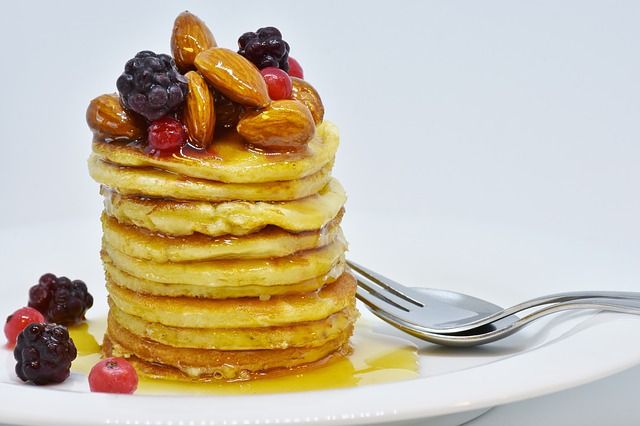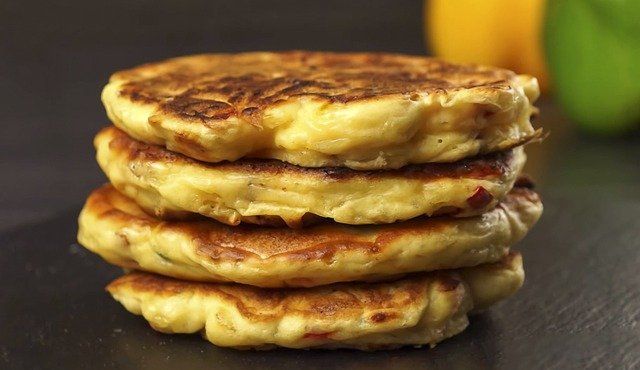Every day is pancake day - this is how they are cooked in other countries!

Who doesn't love the smell of fresh pancakes on a Sunday morning - or actually every morning? Nobody can tell me that you would leave out fresh pancakes with fruits or maple syrup...
So simple, so few ingredients. A little egg, a little flour, a little baking powder, a little milk, sugar and salt - and the pancakes are ready.
Pancakes, pancakes, pancakes - or what?
American, Saxon, Bavarian, German, ...
Depending on where or whom you ask, you will be presented with different dishes.

Starting with the typical American pancake:
In contrast to the German pancakes that follow, the secret of American pancakes is their thickness and yet their fluffiness. This makes them perhaps a little more difficult to prepare. To make them especially fluffy, you can separate some of the eggs before you mix the ingredients and stir the egg whites into a beaten egg white. Then fold it in very slowly and carefully - almost like a soufflé.
In contrast to the German pancakes that follow, the secret of American pancakes is their thickness and yet their fluffiness. This makes them perhaps a little more difficult to prepare. To make them especially fluffy, you can separate some of the eggs before you mix the ingredients and stir the egg whites into a beaten egg white. Then fold it in very slowly and carefully - almost like a soufflé.
If you want to devote yourself to the German variant - the pancake - caution is advised. Not everywhere the term "pancake" means the same dish. If you are travelling in the new federal states (the former East Germany), you will get a Berliner when ordering a pancake.
Also known as Krapfen in the south of Germany, this yeast pastry with the jam filling is not part of this blog. If you want a pancake in these states, you order a pancake there.
The main difference between the American and the German version is in any case the size and thickness of the individual specimens. While, as just mentioned, the focus of the American variant is on the thickness, the focus of the German variant is more on the width. You just have to be careful not to make them too thin, otherwise they will tear or you will have a crêpe instead of a pancake.
The main difference between the American and the German version is in any case the size and thickness of the individual specimens. While, as just mentioned, the focus of the American variant is on the thickness, the focus of the German variant is more on the width. You just have to be careful not to make them too thin, otherwise they will tear or you will have a crêpe instead of a pancake.
Of course, the fluffiness also makes a difference in terms of taste, but actually the dough is basically the same.
What do you eat with it?
Whether with maple syrup (from Canada) or with cinnamon and sugar. Whether with fruits, puree or jam. There is no limit to the sweet heart in the design of the side dish. You can add whatever your heart desires.
Similar to crêpes, it is now common practice to serve savory side dishes. Here you can spread tomato sauce with minced meat - like a kind of bolognese - or even a tarte flambée mixture well on the pancake.
For the savory varieties, German pancakes are better suited than American fluffy pancakes because they roll better.
As an alternative
If you want to enjoy your pancakes a little healthier and with less fat, you can simply use buttermilk instead of milk - the unsweetened milk, of course.

Another good alternative for coconut fans is to prepare the dough with coconut water and a little coconut milk. Or you can simply try banana pancakes, so you can also make good use of the brown, already somewhat mushy bananas.
Even savory dough variations made of zucchini or cheese offer a real innovation already during preparation and should not be ignored.
Even savory dough variations made of zucchini or cheese offer a real innovation already during preparation and should not be ignored.
You might also be interested in: "Blueberry pancakes: how to make them and what alternatives exist"